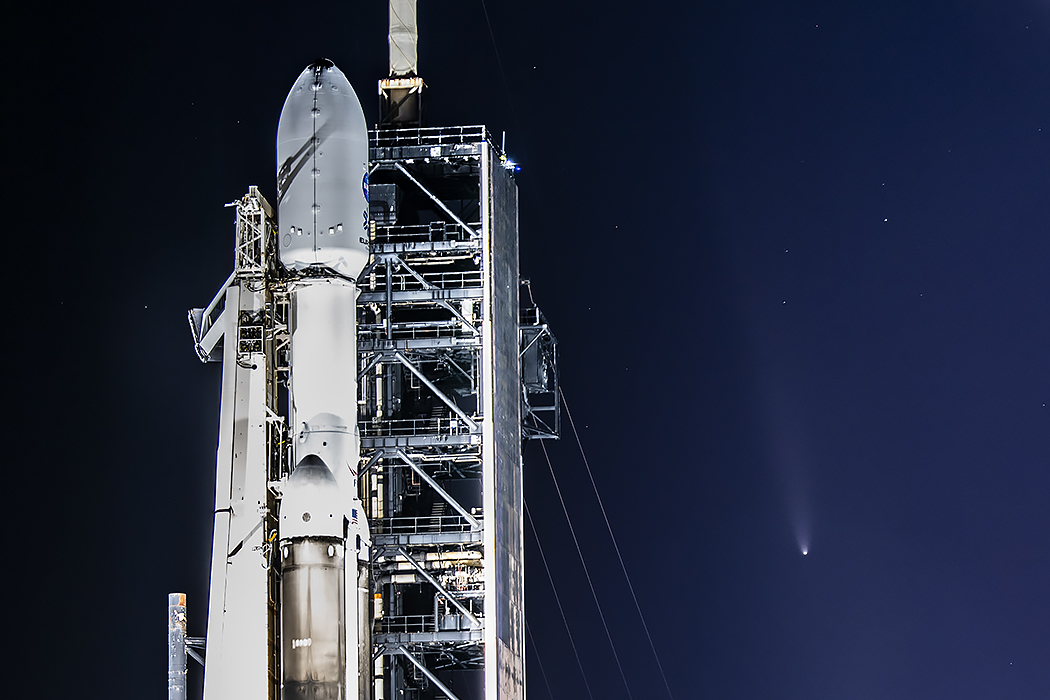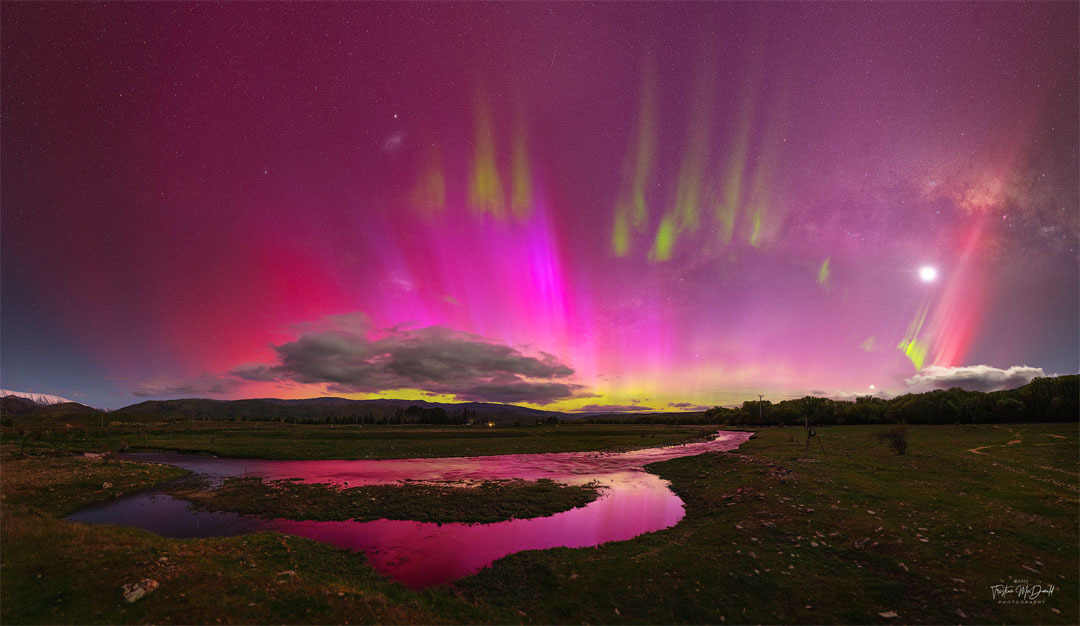Nombre total de pages vues
19/10/2024
VILLES BIONIQUES DU FUTUR - Coral Reef : logements aux points de vue multiples
ASTRONOMY - Comet Tsuchinshan-ATLAS Flys Away
2024 October 19
Image Credit & Copyright: Xingyang Cai
Explanation: These six panels follow daily apparitions of comet C/2023 A3 Tsuchinshan-ATLAS as it moved away from our fair planet during the past week. The images were taken with the same camera and lens at the indicated dates and locations from California, planet Earth. At far right on October 12 the visitor from the distant Oort cloud was near its closest approach, some 70 million kilometers (about 4 light-minutes) away. Its bright coma and long dust tail were close on the sky to the setting Sun but still easy to spot against a bright western horizon. Over the following days, the outbound comet steadily climbs above the ecliptic and north into the darker western evening sky, but begins to fade from view. Crossing the Earth's orbital plane around October 14, Tsuchinshan-ATLAS exhibits a noticeable antitail extended toward the western horizon. Higher in the evening sky at sunset by October 17 (far left) the comet has faded and reached a distance of around 77 million kilometers from planet Earth. Hopefully you enjoyed some of Tsuchinshan-ATLAS's bid to become the best comet of 2024. This comet's initial orbital period estimates were a mere 80,000 years, but in fact it may never return to the inner Solar System.
18/10/2024
ASTRONOMY - Most of Comet Tsuchinshan-ATLAS
2024 October 18
Image Credit & Copyright: Adam Block
Explanation: On October 14 it was hard to capture a full view of Comet C/2023 A3 Tsuchinshan-ATLAS. Taken after the comet's closest approach to our fair planet, this evening skyview almost does though. With two telephoto frames combined, the image stretches about 26 degrees across the sky from top to bottom, looking west from Gates Pass, Tucson, Arizona. Comet watchers that night could even identify globular star cluster M5 and the faint apparition of periodic comet 13P Olbers near the long the path of Tsuchinshan-ATLAS's whitish dust tail above the bright comet's coma. Due to perspective as the Earth is crossing the comet's orbital plane, Tsuchinshan-ATLAS also has a pronounced antitail. The antitail is composed of dust previously released and fanning out away from the Sun along the comet's orbit, visible as a needle-like extension below the bright coma toward the rugged western horizon.
17/10/2024
VILLES BIONIQUES DU FUTUR - Les galets de Shenzen : un avant-goût de la cité du futur
INVENTIONS A L'HORIZON 2050 - Les vêtements en spray révolutionneront l'habillement et la santé
LES NUAGES DIEUX DU CIEL - Paysage avec cumulus
ASTRONOMY - The Clipper and the Comet
2024 October 17
Image Credit & Copyright: Ben Cooper (Launch Photography)
Explanation: NASA's Europa Clipper is now headed toward an ocean world beyond Earth. The large spacecraft is tucked into the payload fairing atop the Falcon Heavy rocket in this photo, taken at Kennedy Space Center the day before the mission's successful October 14 launch. Europa Clipper's interplanetary voyage will first take it to Mars, then back to Earth, and then on to Jupiter on gravity assist trajectories that will allow it to enter orbit around Jupiter in April 2030. Once orbiting Jupiter, the spacecraft will fly past Europa 49 times, exploring a Jovian moon with a global subsurface ocean that may have conditions to support life. Posing in the background next to the floodlit rocket is Comet Tsuchinsan-ATLAS, about a day after the comet's closest approach to Earth. A current darling of evening skies, the naked-eye comet is a vistor from the distant Oort cloud
16/10/2024
LES NUAGES DIEUX DU CIEL - Stratocumulus au parc national des Arches (États-Unis)
ASTRONOMY - Colorful Aurora over New Zealand
2024 October 16
Image Credit & Copyright: Tristian McDonald
Explanation: Sometimes the night sky is full of surprises. Take the sky over Lindis Pass, South Island, New Zealand one-night last week. Instead of a typically calm night sky filled with constant stars, a busy and dynamic night sky appeared. Suddenly visible were pervasive red aurora, green picket-fence aurora, a red SAR arc, a STEVE, a meteor, and the Moon. These outshone the center of our Milky Way Galaxy and both of its two satellite galaxies: the LMC and SMC. All of these were captured together on 28 exposures in five minutes, from which this panorama was composed. Auroras lit up many skies last week, as a Coronal Mass Ejection from the Sun unleashed a burst of particles toward our Earth that created colorful skies over latitudes usually too far from the Earth's poles to see them. More generally, night skies this month have other surprises, showing not only auroras -- but comets.
15/10/2024
VILLES BIONIQUES DU FUTUR - L’arche bionique de Taiwan : la nature à la verticale
SANTé/MéDECINE - CANCER - 12 AVANCéES REVOLUTIONNAIRES - 2. Un test sanguin capable de détecter 18 cancers dès le stade précoce
Des chercheurs américains ont mis au point un test sanguin révolutionnaire capable d’identifier 18 types de cancer à un stade précoce, en an...

-
2022 September 26 All the Water on Planet Earth Illustration Credit: Jack Cook, Adam Nieman, Woods Hole Oceanographic Institution ; Data ...
-
2025 May 11 The Surface of Venus from Venera 14 Image Credit: Soviet Planetary Exploration Program , Venera 14 ; Processing & Copyri...









